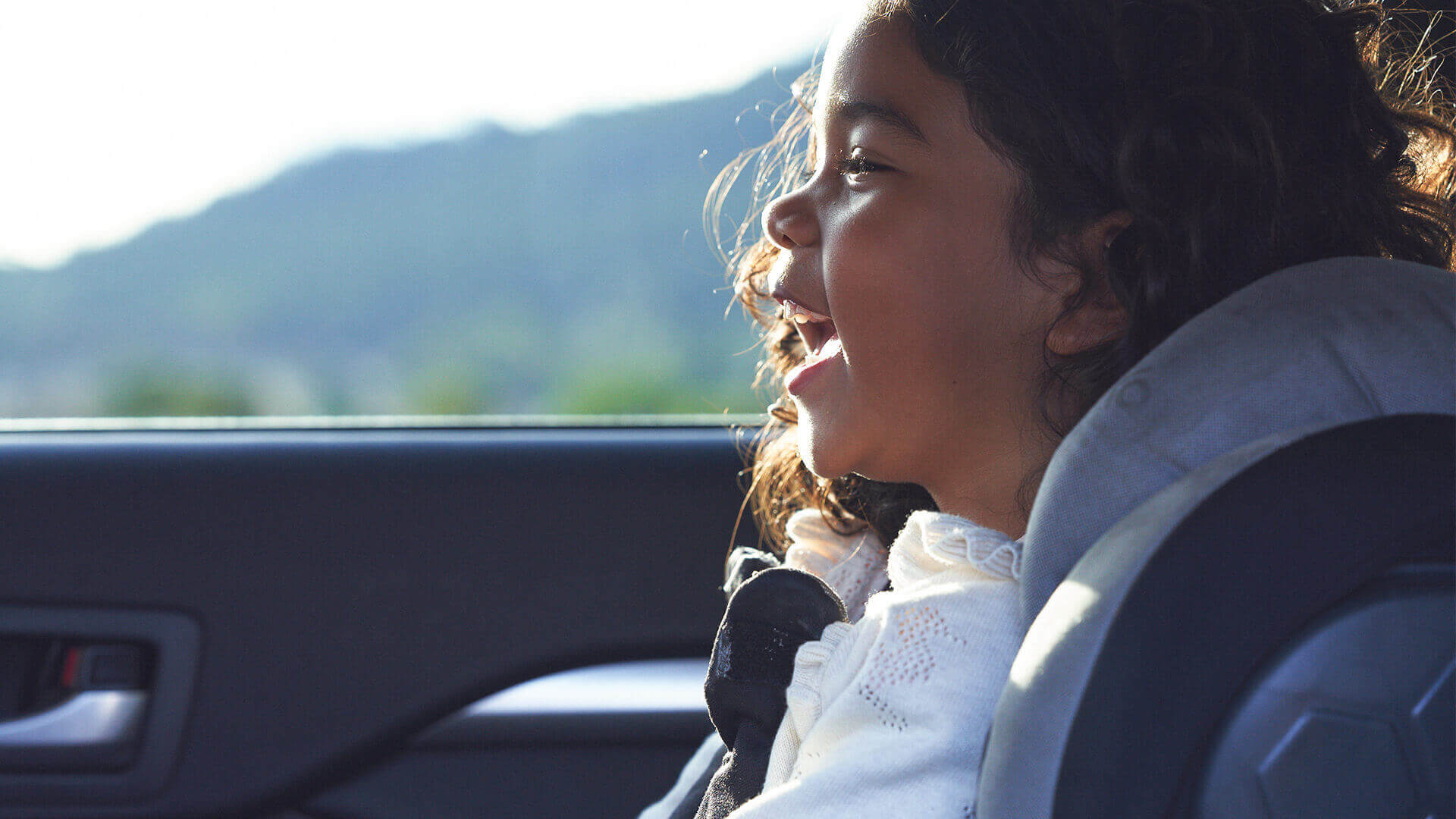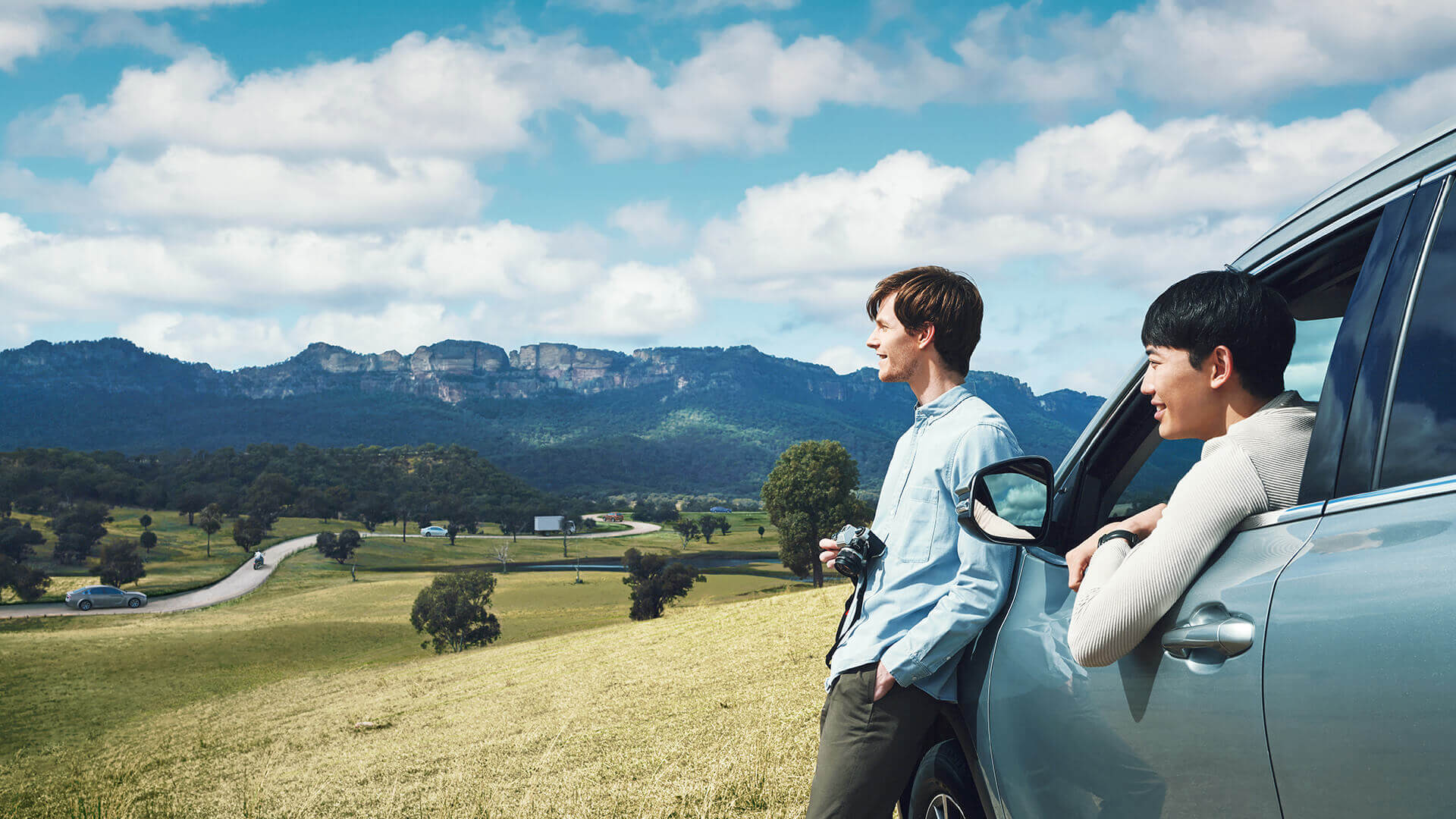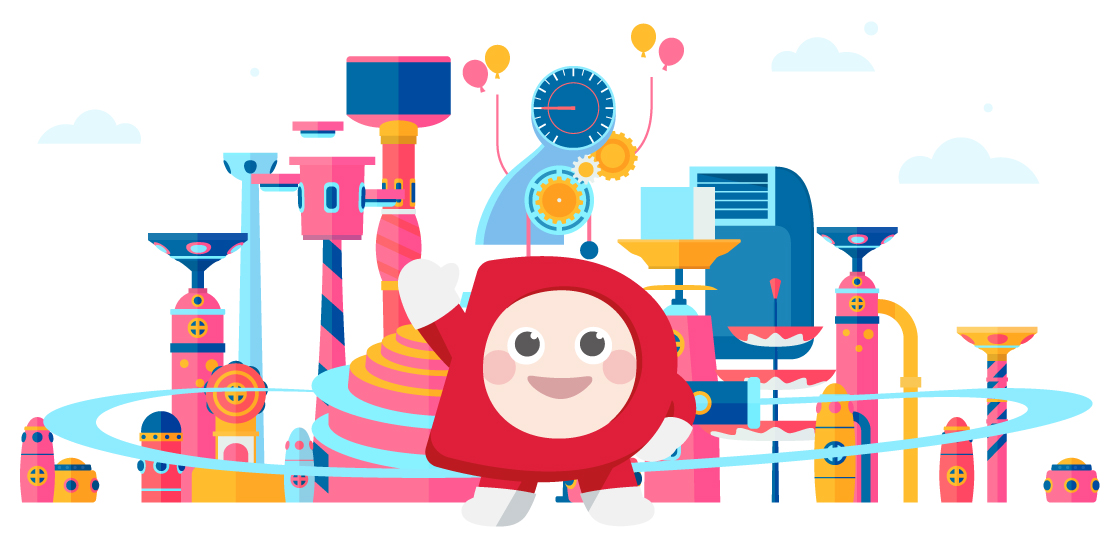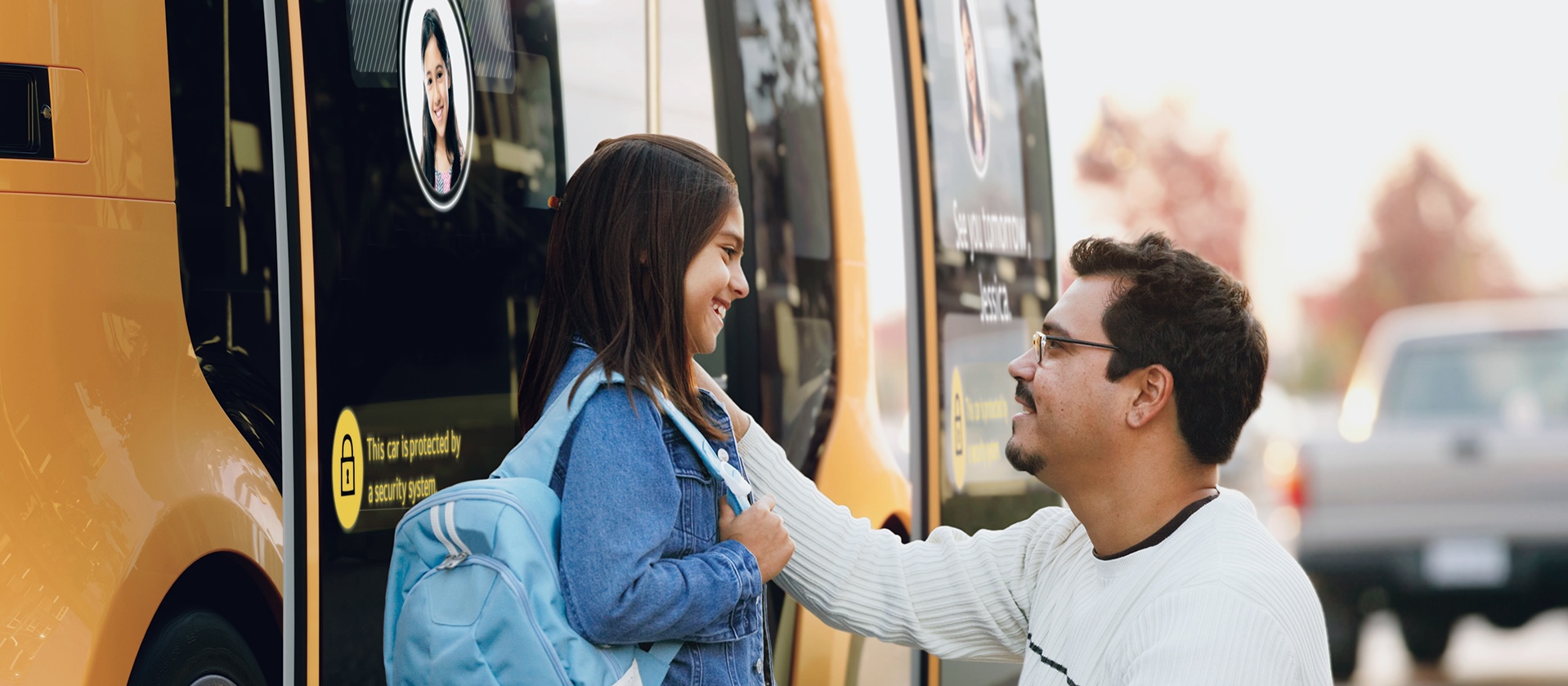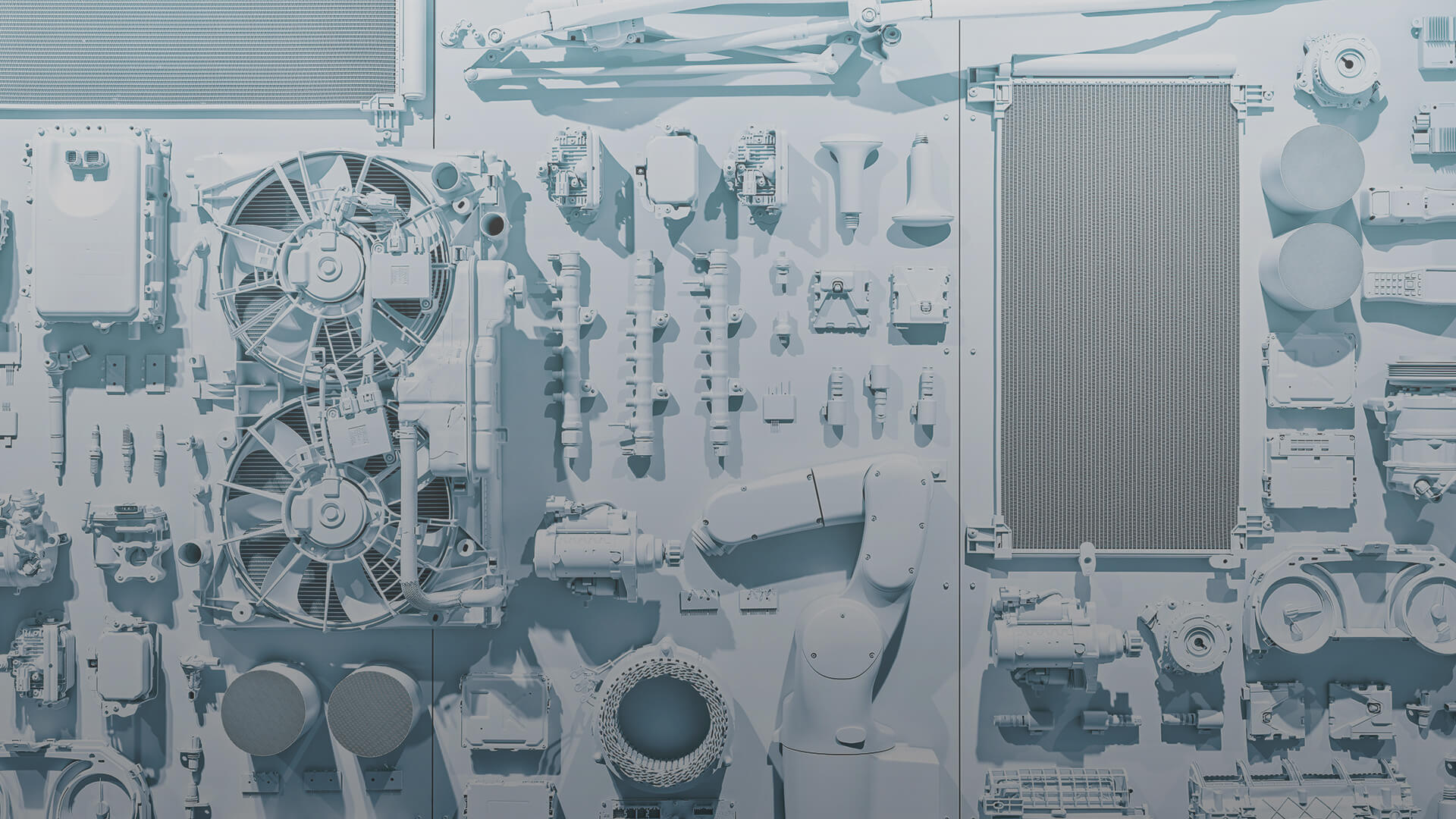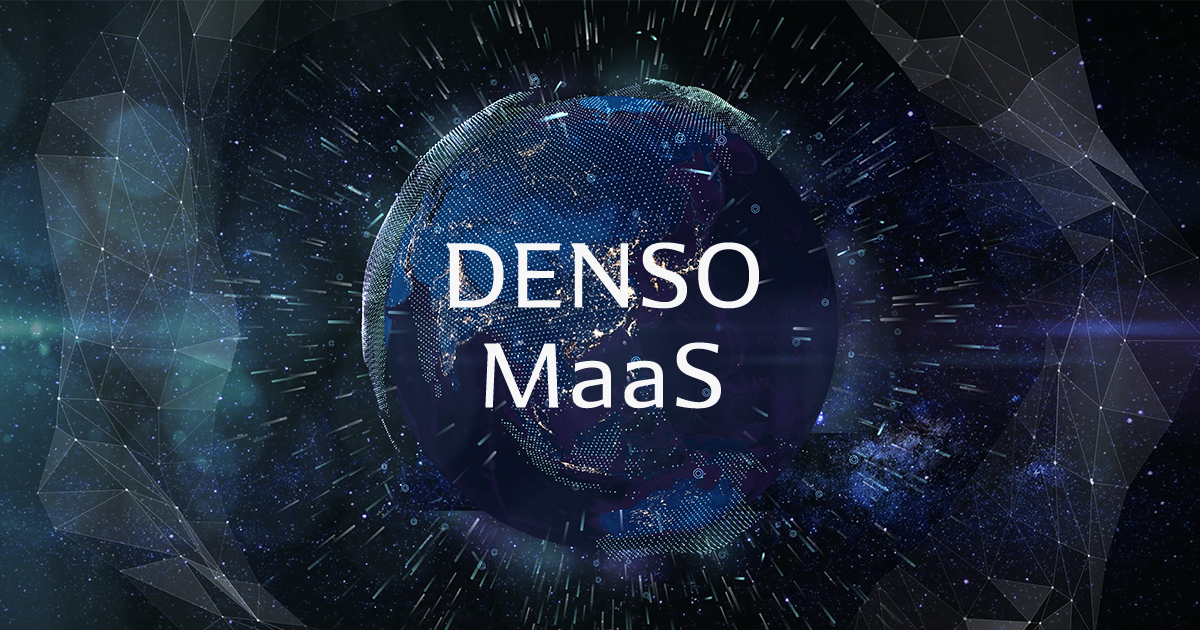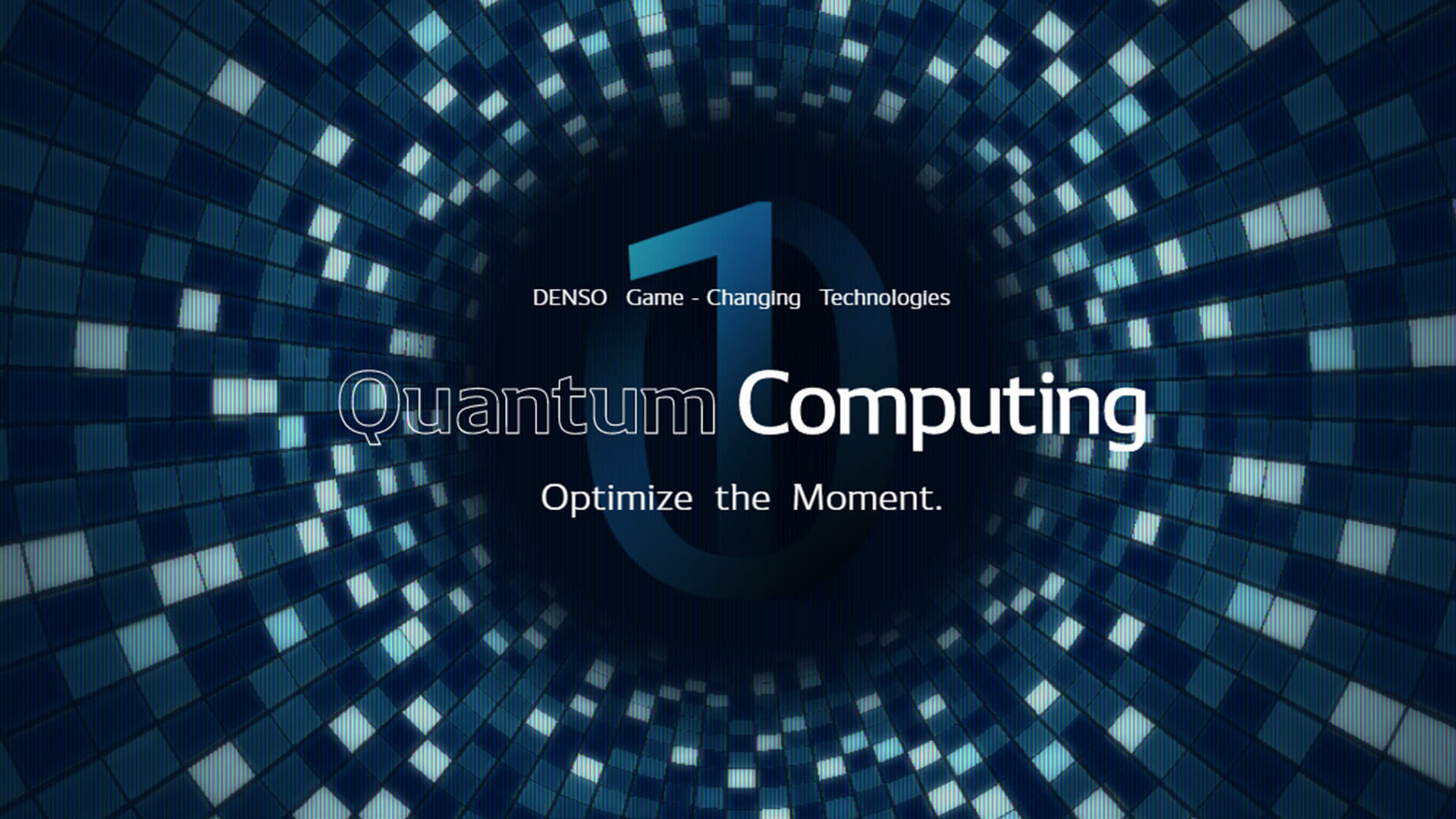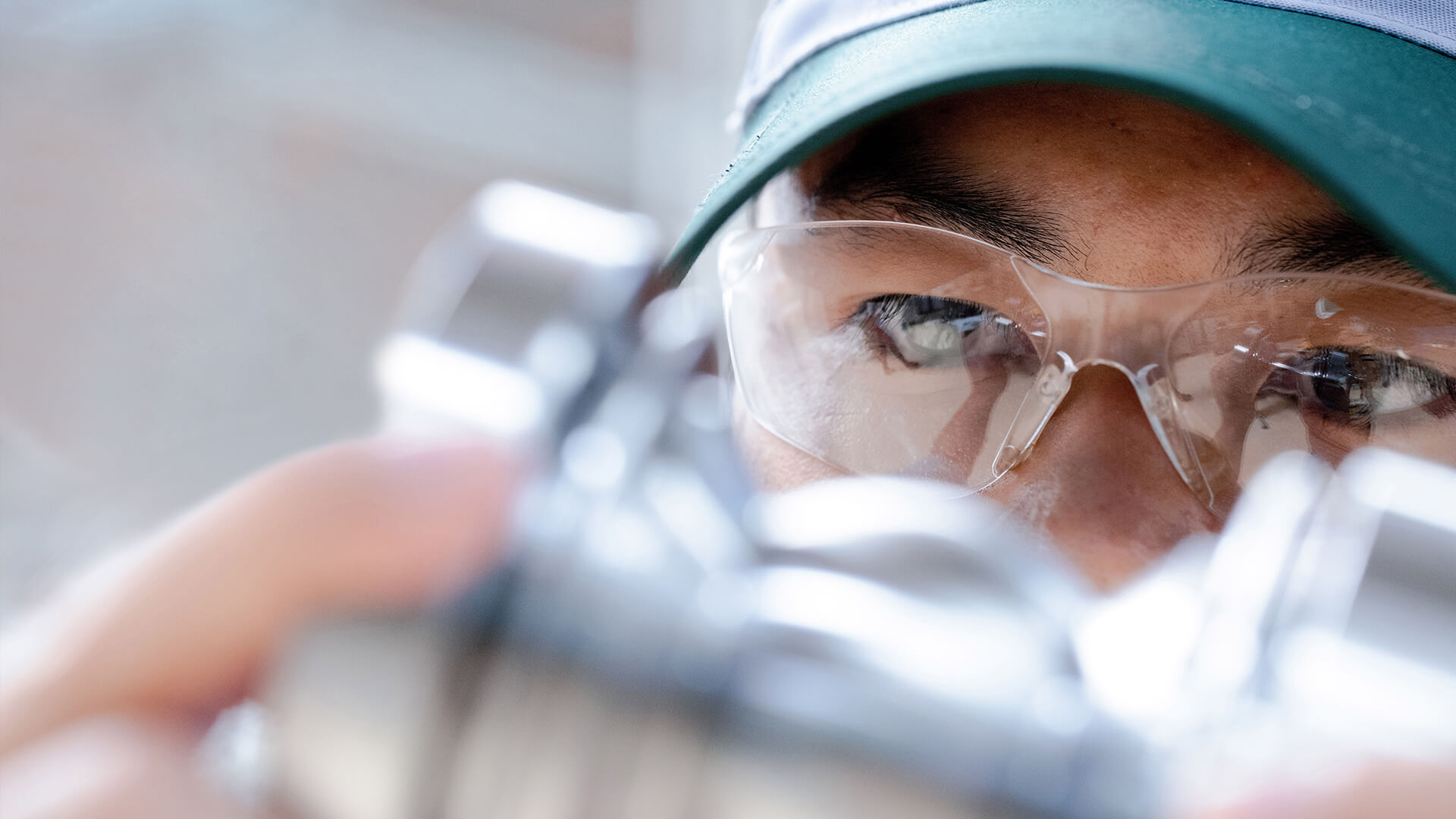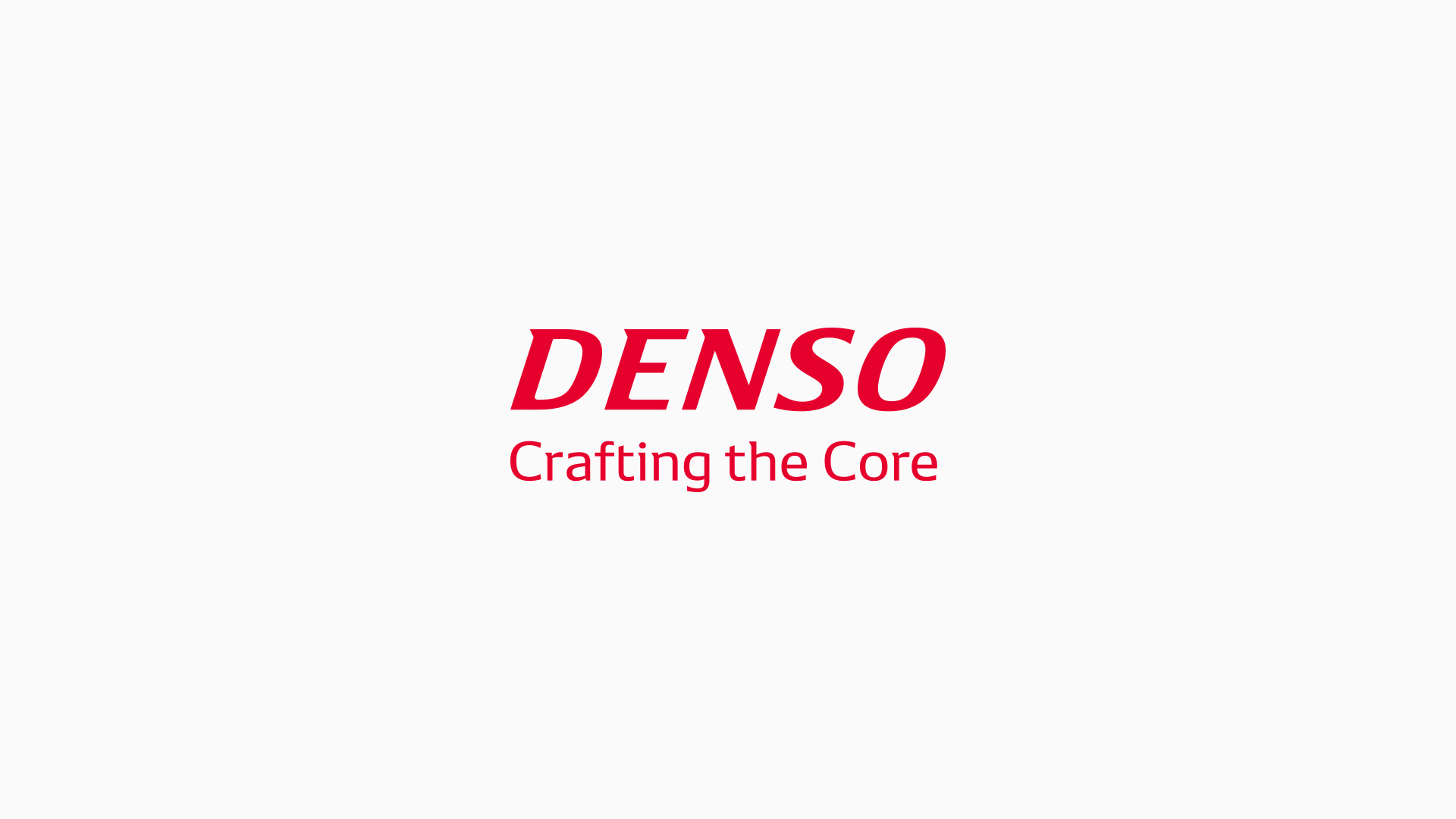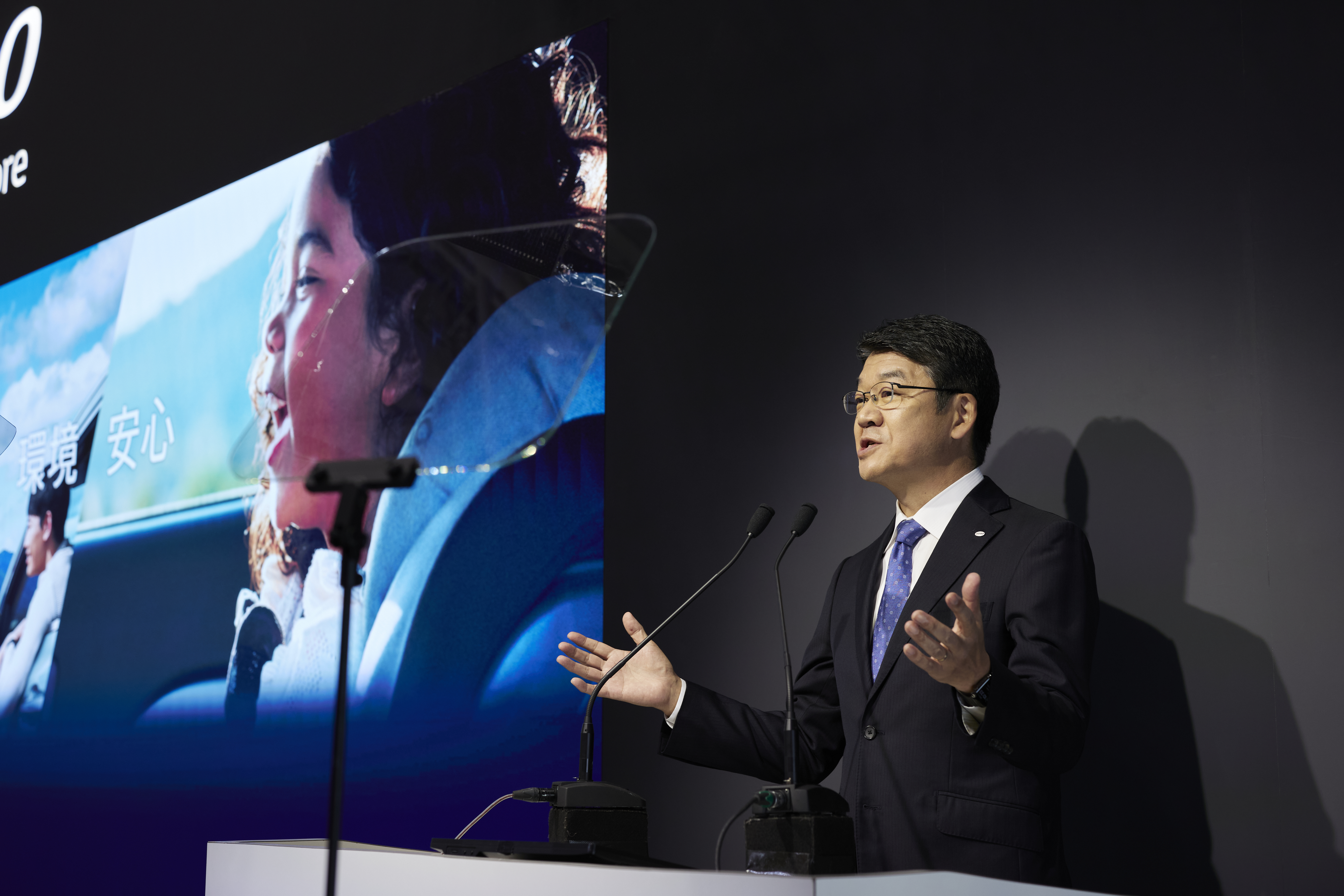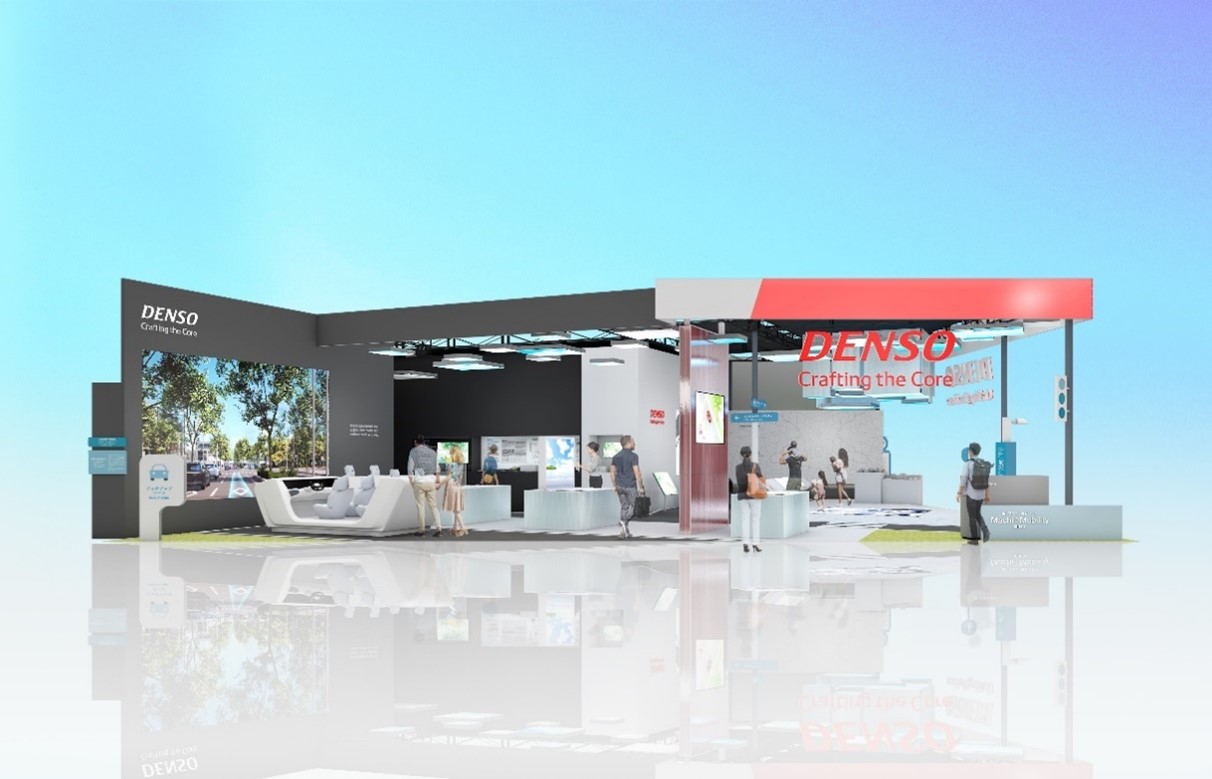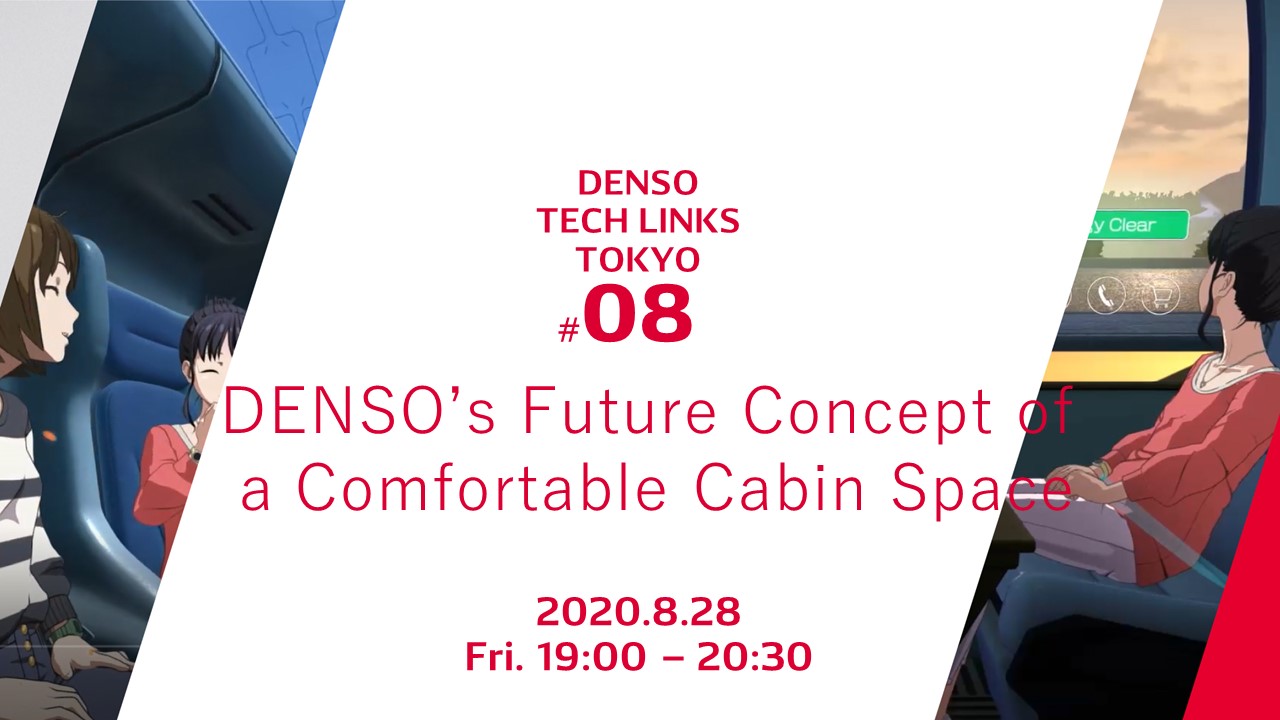
Three Technologies of “Sense”, “Think” and “Act” Required to Create a Comfortable Cabin Space A Comfortable Cabin Space in the Future Envisioned by DENSO
DENSO Tech Links Tokyo is an event to introduce DENSO’s vision and efforts. In the eighth event, three employees gave online presentations to discuss the definition of a comfortable cabin space based on the theme of “DENSO’s Future Concept of a Comfortable Cabin Space.” Takashi Matsuoka of the Future Cabin R&D Dept., Thermal Systems Advanced R&D Div. introduced technologies to achieve a comfortable cabin in the future.
■Speakers
Takashi Matsuoka
Project Assistant Manager in charge of R&D Section 1, Future Cabin R&D Dept., Thermal Systems Advanced R&D Div., DENSO Corporation
How to Spend Time in the Vehicle Cabin in the Future
Takashi Matsuoka: I’m Takashi Matsuoka of the Thermal Systems Advanced R&D Div. Today, I will give a presentation based on the title of “Enhancing the Experience in the Cabin Space, and its Technologies to achieve”.
Yagi showed a concept movie about how to spend time in the cabin in the future. I will talk about specific technologies for achieving our comfortable cabin concept.
The first point is “How to spend time in the vehicle cabin space in the future.” We focus on “achieving mental and physical satisfaction by personalizing the sensory stimulation depending on the situation,” which is shown in red text.
I would like to explain the background. The Thermal Systems Business Group, which I work for, manufactures thermal components, including car air conditioners. Specifically, the group develops thermal management products and technologies.
Regarding car air conditioners, we have developed technologies that make the cabin more comfortable, such as cooling the cabin when it’s hot in summer like today or heating the cabin when it’s cold in winter.
However, when automated driving, shared vehicles, and ride sharing become the norm in the future, as shown in the concept movie, the work of driving will be minimized, and occupants are likely to spend their time in the cabin in various ways.
Car air conditioners are used to ensure thermal comfort. However, comfort varies depending on the person. This is why we came up with the idea of personalizing the sensory stimulation depending on the situation. We analyzed the needs when people start to use the cabin differently, and concluded that occupants would like the four items shown here.
The first point is “focus.” This means maintaining concentration on driving and work. The functionality includes overcoming drowsiness during conventional driving or automated driving. When driving becomes fully automated, some people may want to work in the cabin, so we will enable them to focus on doing so.
The second point is “energy.” This means reducing tiredness and increasing vitality. Recently, many people tend to feel always tired, so they will appreciate being stimulated by riding a car. We do not necessarily focus on physical fatigue; an exciting and energizing experience is also included.
The third point is “relax.” This is based on the idea that people want to feel more relaxed in the cabin.
The fourth point is sleep. I just said that, “when driving becomes fully automated driving, some people may want to work in the cabin,” but others may want to sleep.
We conducted a preliminary questionnaire survey about what respondents would want to do in the cabin. Many said that they want to sleep, so it seems there would be strong demand.
All Three Technologies of “Sense”, “Think” and “Act” Required
Next, I will explain the technologies required to create a comfortable cabin space and enable occupants to spend time as they like. Previously, I talked about our focus on “achieving mental and physical satisfaction by personalizing the sensory stimulation depending on the situation.” To create such a cabin space, we need three technologies: “Sense”, “Think” and “Act”. Note that all these technologies are required.
Specifically, “Sense” technology is needed to obtain information about occupants, and “Think” technology is needed to estimate the occupants’ condition. These are technologies for personalizing the functionality depending on the situation. Finally, the “Act” technology is to help keep occupants in the ideal condition so that they can feel mental and physical satisfaction through the sensory stimulation.
On the next slide, I will briefly explain our efforts to develop “Sense”, “Think” and “Act”.
”Sense” Technology
First, let’s take a look at “sense” technology. Here, “Sence” means obtaining information about occupants. This is a screenshot of the movie that we watched. It shows the vital data of the sleeping woman. To gather this data, the cabin must be equipped with many sensing devices to obtain information about occupants.
Let’s take a look at the sensing devices that are being developed. The leftmost device is an infrared sensor. It measures the body surface temperature of occupants using infrared light.
The second device is a driver camera. At DENSO, we are developing the technology under the name of “driver status monitor,” or DSM for short. The camera captures the facial image of the driver.
The third device is a biometric sensor. To analyze the occupants’ condition, it is necessary to check their biological readings. This figure looks like an electrocardiogram. We are developing sensors for monitoring electrocardiograms and pulse waves.
The fourth device is for obtaining vehicle information. To determine the driver’s condition, it is essential to check how the driver drives the vehicle. We are developing sensors to obtain such information.
”Think” Technology
Next, I will introduce the “Think” technology, which is used to estimate the occupants’ condition. The movie showed a scene in which the agent was located between the male driver and the female occupant in the passenger seat. In the movie, the agent made a recommendation or proposal, saying, “Your side was set to ‘Energy Mode’ earlier.”
Probably, the agent sensed the driver’s condition, estimated that the driver was tired, and proposed turning on the energy mode. Doing this requires algorithms to estimate the occupants’ condition, as shown on the slide.
Specifically, we are developing algorithms for estimating the thermal sensation of occupants, namely, whether they feel hot or cold in specific parts of their body, based on the information obtained from infrared sensors.
In terms of “focus,” we are developing algorithms for estimating drowsiness based on eyelid opening, which can be measured using a driver camera. We are also developing algorithms for estimating concentration on driving based on the driver’s facial direction and line of sight, which can be measured using a camera.
We are actively developing algorithms to estimate the occupants’ condition by monitoring stress and emotion for “relax” or by monitoring fatigue for “energy.”
”Act” Technology
Next, let’s take a look at the “Act” technology. Here, “Act” is intended to attain the ideal condition of occupants. The movie showed a woman who seemed to be very relaxed. It is important to estimate the occupants’ condition, but the “Act” technology is needed to keep the occupants in their ideal condition. I will introduce the specific technologies.
First, we are developing sensory stimulation devices, which are indicated on the left. The cabin will be equipped with many devices that give sensory, including a car air conditioner, air-conditioned seats, aroma diffusers, illuminations, an audio system, and displays. We are developing these devices.
However, these devices are not enough to reach the ideal condition. We are also developing control algorithms, which are indicated on the right, which are appropriate for the “focus,” “energy,” “relax,” and “sleep” modes. More specifically, we are developing technologies for optimally operating and controlling the sensory stimulation devices to achieve the target condition.
How to Implement “Sense”, “Think” and “Act” Technologies in Vehicles
Next, I will explain how to implement “Sense”, “Think” and “Act” technologies from the viewpoint of system configuration. Sensing devices for recognition and sensory stimulation devices for stimulation are hardware, so you can easily imagine how they are implemented in vehicles. Instead, I will explain the in-vehicle implementation of the algorithms for estimating the condition and controlling the sensory stimulation devices.
A vehicle is equipped with many ECUs. Algorithms for estimating the condition and for controlling sensory stimulation devices are embedded in ECUs to control devices. In the future, these devices may be operated through communication with outside-car servers via the connected car functionality.
I think that DENSO’s strength in development of the cockpit and cabin is its integrated development capability for “Sense”, “Think” and “Act” technologies and devices.
We study the human senses to ensure comfort for occupants. We develop algorithms for estimating the condition by taking full advantage of AI technologies, which are becoming very popular.
Thus, DENSO’s strength is its integrated development capability for “Sense”, “Think” and “Act” technologies based on studies of the human senses and using AI technologies.
We are going to continue to use our wide range of technologies to create a safe and comfortable cabin space.
Thank you for your attention.
